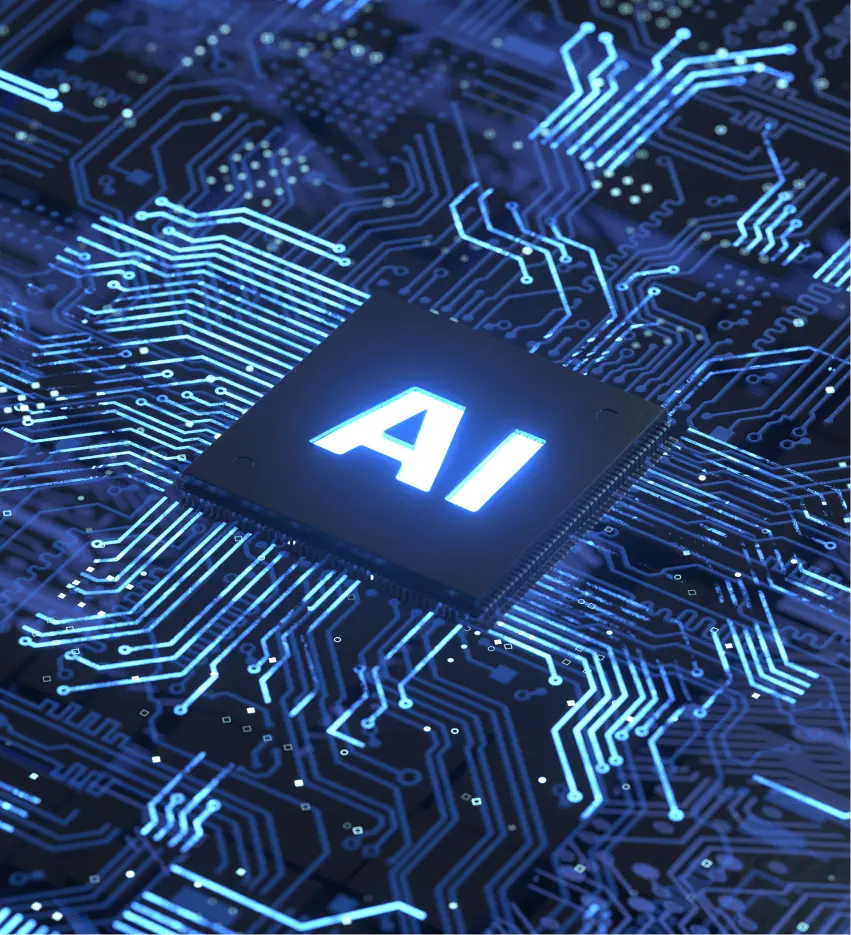In the rapidly evolving artificial intelligence ecology, generative AI applications are gaining traction, offering disruptive capabilities across a wide range of sectors. However, assuring their correctness, dependability, and ethical compliance poses distinct obstacles. According to Gartner, by 2025, over 30% of all new AI implementations will employ generative AI approaches, emphasizing the vital need for rigorous testing procedures. Meanwhile, a McKinsey analysis states that AI-related mistakes might cost firms up to $500 billion per year, underscoring the financial risks associated with successful AI testing.
This blog delves into key tactics and best practices for testing generative AI systems, providing you with a thorough road map for navigating this challenging but critical area of AI development. From grasping the complexities of model validation to creating continuous testing frameworks, we’ll dig into actionable insights supported by industry-leading research, assisting you in ensuring your AI systems are not just creative but also dependable and ethical.
Join us as we simplify the testing process, using expert viewpoints and cutting-edge data to provide you with the skills you need to succeed in the generative AI age.

Understanding the importance of testing generative AI applications
Generative AI applications, which may generate literature, pictures, music, and even software code, are transforming the technology environment. These applications use complex machine learning models, such as Generative Adversarial Networks (GANs) and Transformer models like GPT-4, to produce results that are frequently indistinguishable from human-created material. However, enormous power with great responsibility. It is critical to ensure that these AI models are reliable, ethical, and accurate.
The complexity of generative AI models
Generative AI models are intrinsically complicated, with millions or even billions of parameters that must be fine-tuned. Unlike traditional software testing, which allows for specified inputs and outputs, generative AI models function statistically. This means that for each given input, there are several alternative outputs, each with varied quality and importance. This unpredictability adds a degree of complexity, necessitating specific testing methodologies.
Challenges in Testing Generative AI
- Guarantee output quality and consistency: One of the most significant issues is assuring the quality and consistency of the created material. Because generative AI models can create a broad range of outputs, measurements and benchmarks are required to judge their quality. According to MIT Technology Review research, approximately 60% of AI projects fail to progress beyond testing owing to poor output quality and consistency.
- Bias and Ethical Concerns: Generative AI algorithms may unintentionally learn and transmit biases in their training data. This can provide biased, offensive, or morally problematic results. Addressing these risks necessitates extensive testing and ongoing monitoring. According to the AI Now Institute, biased AI systems can have serious societal and economic consequences, emphasizing the importance of ethical AI testing procedures.
- Bias and Ethical Concerns: Generative AI algorithms may unintentionally learn and transmit biases in their training data. This can provide biased, offensive, or morally problematic results. Addressing these risks necessitates extensive testing and ongoing monitoring. According to the AI Now Institute, biased AI systems can have serious societal and economic consequences, emphasizing the importance of ethical AI testing procedures.
Test Strategies for Generative AI
- Automated Testing Frameworks: Implementing automated testing frameworks that can deal with the probabilistic nature of generative AI models is critical. Tools like TensorFlow Extended (TFX) and MLflow can help to speed up testing by automating data validation, model assessment, and performance monitoring.
- Human-in-the-Loop Testing: Given the nuances of generative AI outputs, HITL testing can give useful insights. In addition to automated testing, human evaluators can examine the quality, relevancy, and ethical implications of created information.
- Continuous Testing and Monitoring: Continuous testing and monitoring are essential for generative AI models, including after deployment. This entails creating pipelines for continuous integration and continuous deployment (CI/CD), which can aid in discovering and fixing issues in real time. According to Forrester, firms that employ continuous testing are 30% more likely to provide high-quality AI applications.
- Bias Mitigation Techniques: Techniques like data augmentation, fairness requirements, and bias detection algorithms might assist in reducing biases in generative AI models. Audits and bias assessments should be an ongoing element of the testing process.

Automated testing frameworks for generative AI
The intricacy and instability of generative AI models demand sophisticated testing frameworks that can handle their distinct traits. Automated testing frameworks are critical for ensuring that the testing process remains efficient, scalable, and accurate. Below, we look at critical components and recommended practices for developing automated testing frameworks for generative AI systems.
Key Features of Automated Testing Frameworks
Data validation and preprocessing
- Data Integrity Checks: It is vital to ensure that training and test data are both high quality and consistent. Automated methods such as TensorFlow Data Validation (TFDV) may discover abnormalities and inconsistencies in the data pipeline, hence ensuring high data integrity.
- Preprocessing pipelines: Establishing strong preprocessing processes is critical for standardizing input data. This involves addressing missing values, standardizing data, and enriching datasets to improve model generalization. Preprocessing processes may be automated and streamlined using tools such as Apache Beam.
Model Evaluation and Performance Metrics
- Comprehensive measurements: Traditional performance measurements such as accuracy and F1 score are inadequate for generative models. These models must be evaluated using domain-specific metrics such as the BLEU score for text creation, the Frechet Inception Distance (FID) for picture generation, and the Mean Opinion Score (MOS) for audio production. Automated evaluation systems can continually evaluate these parameters to verify model performance matches expectations.
- Stress testing: Stress testing is critical for assessing the resilience of generative models. This entails feeding the model edge cases and adversarial instances to assess its performance under severe circumstances. CleverHans and Foolbox provide frameworks for creating and testing hostile inputs.
Continuous Integration and Continuous Deployment (CI/CD)
- Pipeline automation: Implementing CI/CD pipelines allows for easy integration of new code and model updates, ensuring that changes do not cause regressions. Platforms like Jenkins, GitLab CI, and Azure DevOps provide comprehensive solutions for automating these pipelines, which include automated testing at each level.
- Automated rollbacks: In the event of deployment problems or performance degradation, automatic rollback options are critical. These techniques can return to earlier stable versions of the model, reducing downtime and limiting possible negative effects on end users.

Best Practices for Automated Testing of Generative AI
Modular Testing Approach
- Unit Testing: Breaking down the generative model into smaller, testable components helps increase test coverage and makes troubleshooting easier. Each module, from data preparation to model inference, should undergo independent testing with unit tests.
- Integration Testing: It is critical to ensure that separate components function properly when combined. Integration tests help check the relationships between pipeline components, identifying flaws that standalone unit tests may miss.
Version Control and Experiment Tracking
- Version Control Systems (VCS): Using a VCS, such as Git, to version code and models promotes traceability and repeatability. Any changes to the model architecture, hyperparameters, or training data should be tracked and documented.
- Experiment Tracking: Tools such as MLflow, Weights & Biases, and Neptune.ai provide detailed tracking of trials, including parameters, metrics, and artifacts. This allows for systematic comparison of multiple model versions and aids in selecting the best-performing models.
Automated Feedback Loops
- Real-time Monitoring: Continuous monitoring of deployed models in production contexts is required to detect drifts and deviations. Implementing automated feedback loops using technologies like Prometheus and Grafana can offer real-time insights into model performance.
- Adaptive Testing: Using automated tools to alter testing parameters based on real-time input might improve the resilience of the testing process. For example, increasing the frequency of testing in response to observed performance abnormalities might prevent possible problems.

Mastering the Art of Testing Generative AI Applications
Testing generative AI applications requires a multifaceted approach that combines automated frameworks, human oversight, and continuous monitoring. By understanding and addressing the unique challenges of generative AI—such as output variability, bias, and security vulnerabilities—organizations can ensure their AI systems are reliable, ethical, and high-performing.
Automated testing frameworks provide the backbone for efficient and scalable testing processes, enabling rapid iteration and deployment. By incorporating data validation, model evaluation, CI/CD pipelines, and modular testing approaches, businesses can maintain high standards of quality and performance. Additionally, human-in-the-loop testing enriches automated methods with nuanced insights, ensuring the generated content aligns with human values and ethical guidelines.
As generative AI continues to evolve, continuous testing and adaptive feedback mechanisms will become increasingly crucial. These practices not only help in maintaining the robustness of AI systems but also in fostering trust and confidence among users and stakeholders.
For those looking to delve deeper into the intricacies of testing generative AI applications and to implement best practices tailored to their specific needs, QualiZeal is here to assist. Our expertise in advanced DevOps solutions and AI testing can help you navigate this complex landscape with confidence.
Ready to elevate your generative AI testing strategy? Contact us at qzinfo@qualizeal.com to learn more about how we can support your journey towards AI excellence. Let’s ensure your AI innovations are not only cutting-edge but also dependable, ethical, and secure












